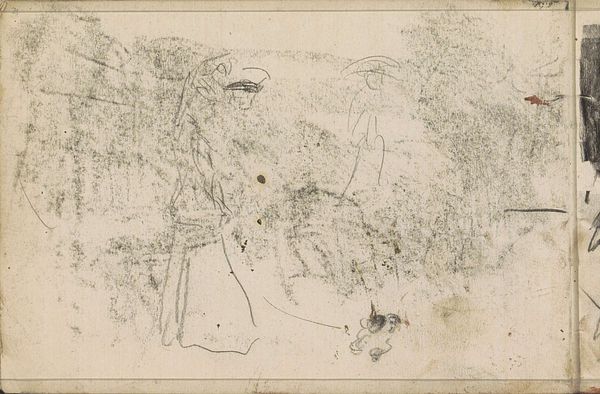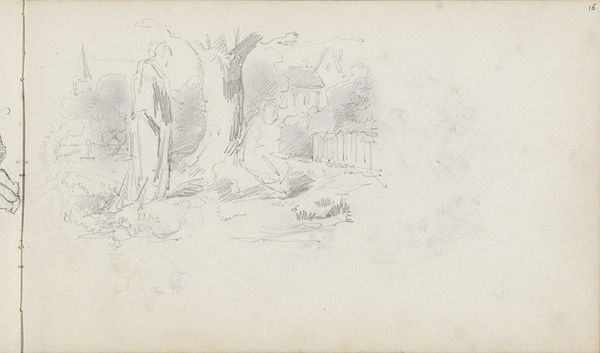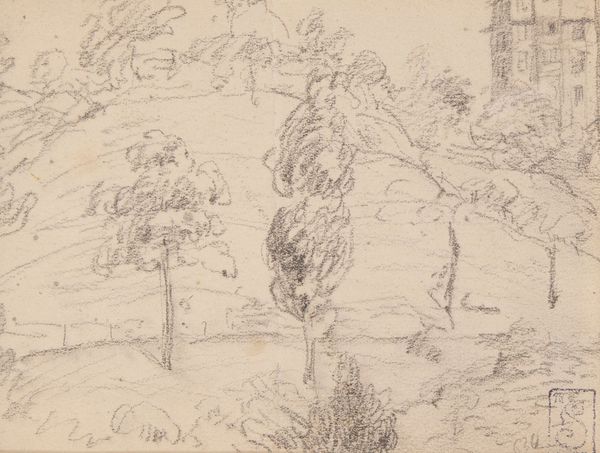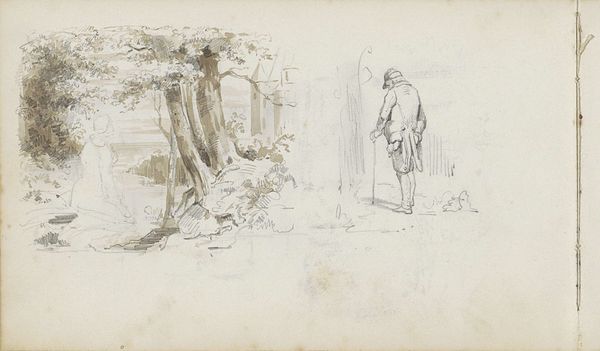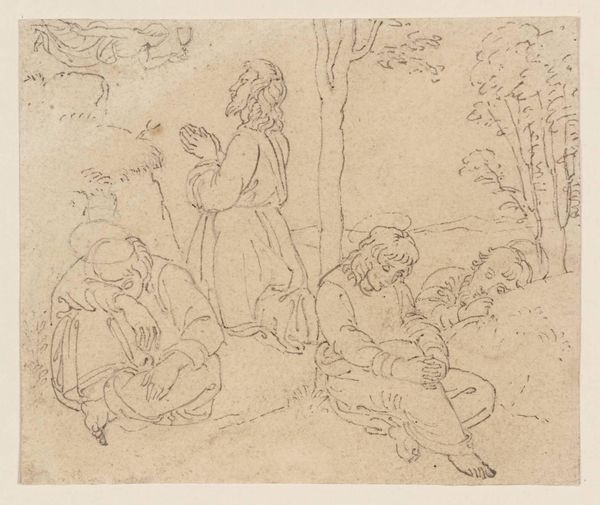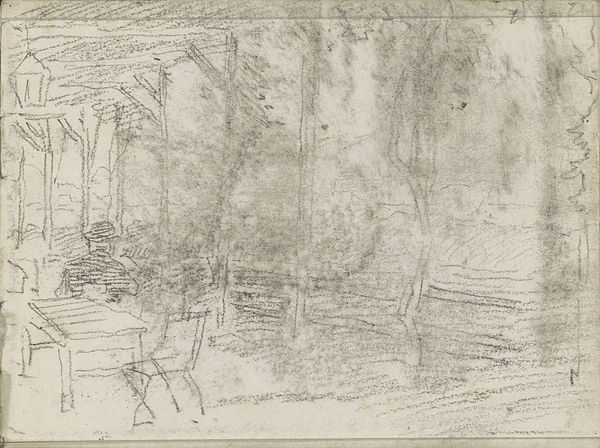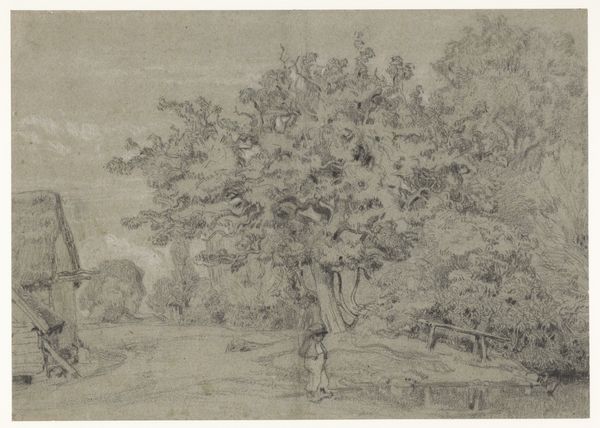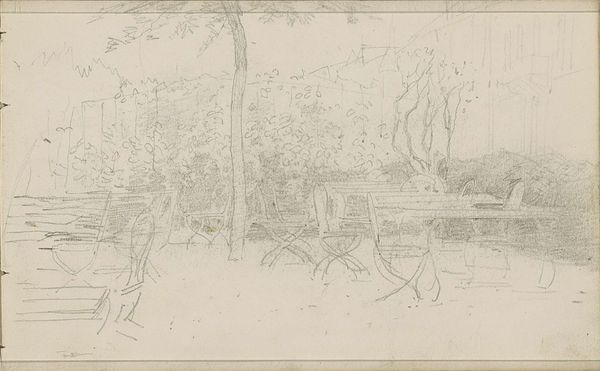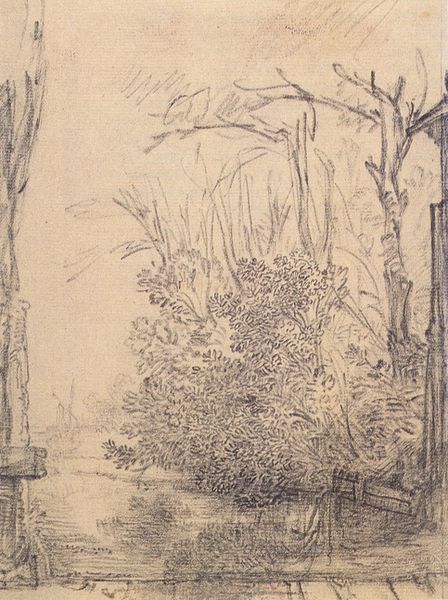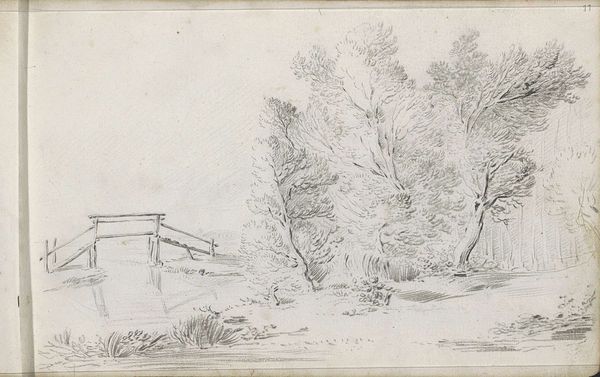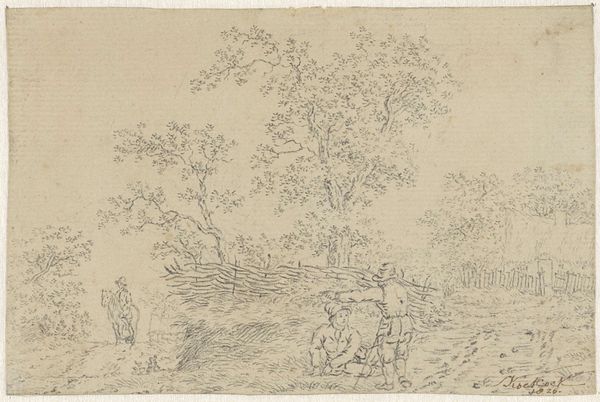
drawing, ink
#
drawing
#
asian-art
#
landscape
#
figuration
#
22_ming-dynasty-1368-1644
#
ink
#
china
Dimensions: Image: 11 1/8 in. x 14 ft. 8 3/4 in. (28.3 x 448.9 cm) Overall with mounting: 12 1/4 in. x 38 ft. 1 15/16 in. (31.1 x 1163.2 cm)
Copyright: Public Domain
Editor: This is “Paragons of Loyalty and Filial Piety,” a 1593 ink drawing by Wang Shanggong. It feels like a scene glimpsed through a delicate fog, the lines are so fine and the wash is so subtle. What strikes you when you look at it? Curator: Ah, Wang Shanggong invites us into a world where duty whispers on the wind. See how the bamboo clusters – symbols of resilience – frame the figures? And that weathered fence, a reminder of life’s barriers, and that one must be broken or endured, not bypassed. Editor: The two figures, are they the "paragons" the title refers to? One is kneeling, it seems? Curator: Precisely! Their placement within the landscape is not accidental; they're intentionally dwarfed, nodding to the overwhelming weight of tradition and expectation within Ming society. Think of them not just as figures, but as living embodiments of ethical principles, their very being molded by Confucian ideals. Isn’t it interesting to think of your behavior in terms of a millenia-old ideal? Editor: It is! So, Wang Shanggong is almost giving us a lesson, couched in art? Curator: More like a meditation, really. The ink wash mimics the impermanence of memory, doesn't it? Makes you wonder: what sacrifices would you make to be worthy? What does being "good" mean to *you*? Are we as different to people in the 16th Century as we think? Editor: Wow, I hadn’t considered the ethical questions embedded in the landscape itself. Thank you for untangling those ideas for me! Curator: And thank you for being my companion on this journey. It’s funny how looking at old art suddenly throws light on new thinking!
Comments
No comments
Be the first to comment and join the conversation on the ultimate creative platform.
